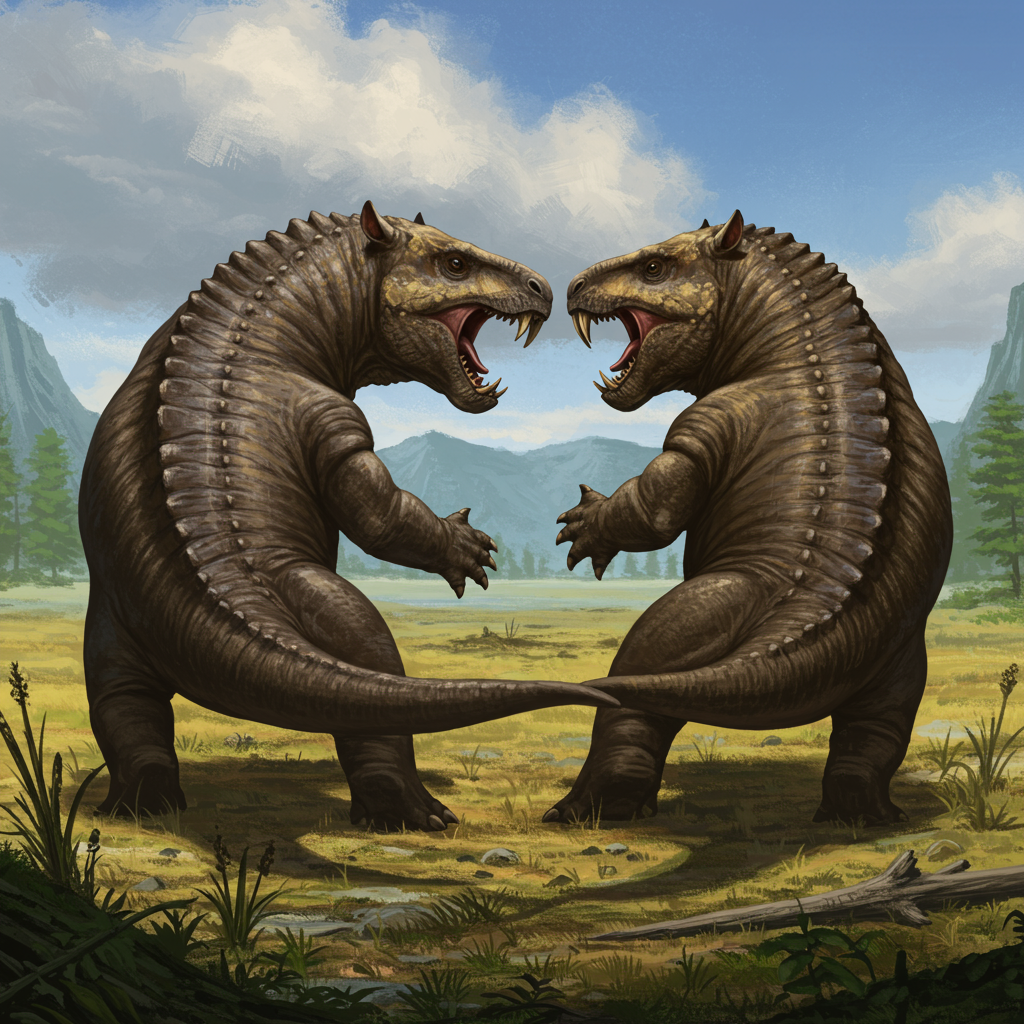Before the reign of dinosaurs, a vastly different world teemed with strange and often terrifying creatures. The Permian period, a geologic era spanning from roughly 298.9 to 251.9 million years ago, was dominated by a unique set of animals, often referred to as Permian monsters, that shaped the course of life on Earth.
The Age Before the Dinosaurs: Understanding the Permian Period
The Permian period followed the Carboniferous and preceded the Triassic period. This era saw the formation of the supercontinent Pangaea, leading to significant changes in climate and environments. According to Dr. Emily Carter, a paleoclimatologist at the University of Cambridge, “The formation of Pangaea resulted in vast arid regions in the interior of the continent, while coastal areas experienced monsoon-like climates. This profoundly influenced the evolution and distribution of Permian fauna.”
Key Permian Monsters and Their Characteristics
The Permian period was populated by a diverse array of creatures, many of which bear little resemblance to modern animals. Here are a few notable examples:
- Dimetrodon: Often mistaken for a dinosaur, Dimetrodon was actually a synapsid, a group of animals more closely related to mammals than to reptiles. Its most distinctive feature was the large sail on its back, likely used for thermoregulation or display. According to research published in the journal Paleontology, the size and shape of the sail varied between species, suggesting different ecological roles.
- Gorgonopsids: These were formidable predators with saber-like teeth and powerful builds. They were among the top predators of their time, preying on a variety of herbivores and smaller carnivores. “Gorgonopsids represent a crucial stage in the evolution of mammalian traits,” notes Dr. Jian Li, a specialist in Permian synapsids at the Chinese Academy of Sciences. “Their advanced teeth and robust skeletons indicate a highly active and predatory lifestyle.”
- Inostrancevia: A particularly large and fearsome gorgonopsid, Inostrancevia possessed exceptionally long saber teeth and a massive skull. Fossil evidence suggests they were apex predators in their ecosystems.
- Edaphosaurus: Like Dimetrodon, Edaphosaurus was a synapsid with a sail on its back. However, the sail of Edaphosaurus was distinguished by crossbars, giving it a very different appearance. It was primarily a herbivore, feeding on plants and vegetation.
The Permian Monsters’ Environment
The terrestrial ecosystems of the Permian period were diverse, ranging from lush forests to arid deserts. These environments supported a variety of plant life, including early conifers and seed ferns. The oceans were also teeming with life, including sharks, bony fish, and invertebrates like ammonoids and brachiopods. A 2023 report by the Permian Basin Research Consortium highlighted the importance of understanding these ancient ecosystems for insights into modern climate change. The report stated that analyzing Permian geological formations provides crucial data for predicting long-term environmental shifts. The Permian period saw significant diversification and specialization among these creatures, setting the stage for the Mesozoic Era.
The Permian-Triassic Extinction Event
The Permian period ended with the most severe extinction event in Earth’s history, often referred to as the “Great Dying.” This event wiped out an estimated 96% of marine species and 70% of terrestrial vertebrate species. The exact causes are still debated, but volcanic activity, climate change, and changes in sea level are believed to have played significant roles. A study published in Nature Geoscience suggests that massive volcanic eruptions in Siberia released huge amounts of greenhouse gases, leading to a runaway greenhouse effect and devastating consequences for life on Earth. According to the United Nations Environmental Programme, understanding the causes and consequences of the Permian-Triassic extinction event is critical for addressing modern biodiversity loss and climate change challenges. This extinction paved the way for the rise of the dinosaurs in the subsequent Triassic period.
The Permian period offers a fascinating glimpse into a world dominated by creatures very different from those we know today. Studying these Permian monsters provides valuable insights into the evolution of life on Earth and the processes that have shaped our planet’s biodiversity. By understanding the past, we can better prepare for the challenges of the future.
